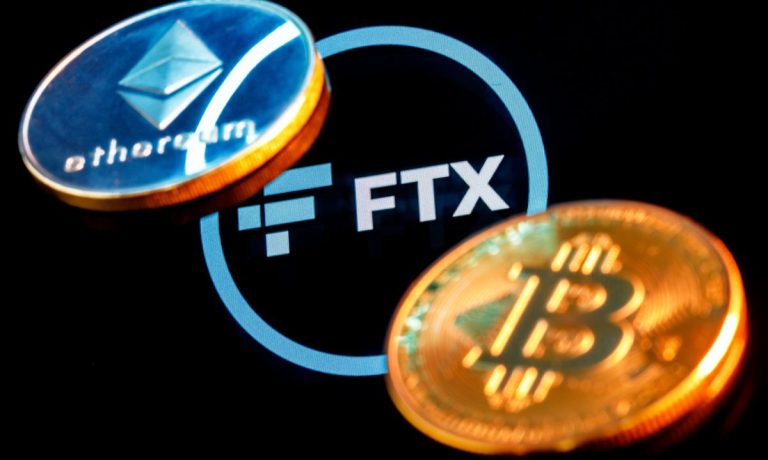This, as the group of affiliated FTX Debtors announce they’ve identified $5.5 billion in liquid cash and assets so far, up from the estimate of $5 billion announced last week.
Is it a return to normal? Not just yet, and likely not for a long time — but it is a small success for the team overseeing the exchange’s bankruptcy restructuring, and a bigger one for the bankrupt crypto exchange’s lengthy list of creditors.
Many of FTX’s blue-chip venture backers, like leading Silicon Valley firm Sequoia Capital, have already written their investments down to zero.
As reported Tuesday (Jan. 17) by Seeking Alpha, the sellable FTX assets discovered so far are made up of $1.7 billion in cash, $3.5 billion in crypto assets and $300 million in securities.
“We are making important progress in our efforts to maximize recoveries, and it has taken a Herculean investigative effort from our team to uncover this preliminary information,” said John J. Ray III, FTX’s CEO, per the report.
Advertisement: Scroll to Continue
While a mammoth amount, the $5.5 billion identified still pales in comparison to the “substantial shortfall of digital assets” missing from FTX.
Federal prosecutors have formed a joint task force to “trace and recover” even more of the billions in missing FTX funds, an effort the legal team overseeing the exchange’s bankruptcy restructuring has already begun independently.
Complicating the matter of the missing money is determining its proper valuation.
FTX’s balance sheet was made up of a slew of famously volatile cryptocurrency assets, as well as myriad illiquid venture investments across related industries.
In a Shakespearian twist, the company’s own demise likely brought the valuation of these cryptocurrencies and crypto companies even further down, as a result of the tremors FTX’s rapid descent into insolvency sent throughout the broader digital asset ecosystem.
High-profile investors including Robert Kraft, Tom Brady, and billionaire heavyweights like Paul Tudor Jones who gave the crypto company equity capital, are finding out that their investments may be gone for good.
Meanwhile, millions of dollars in crypto funds have been transferred in recent weeks using digital wallets affiliated with the cryptocurrency exchange’s founder currently under house arrest, Sam Bankman-Fried.
Bankman-Fried has denied involvement in the transfers, as well as claimed innocence during his federal arraignment. He is being criminally charged with eight counts of fraud and conspiracy with a court date set for Oct. 3.
“I didn’t steal funds, and I certainly didn’t stash billions away,” wrote Bankman-Fried last Thursday (Jan. 12) in a public blog post.
The Asset Composition Recovery Conundrum
The Bahamas’ Securities Commission seized their own multibillion cache just after the company’s bankruptcy.
While the seizure caused weekslong tensions between the U.S. FTX bankruptcy team and the island nation’s own government and regulatory bodies, it has since been resolved.
“There are some issues where we do not yet have a meeting of the minds, but we resolved many of the outstanding matters and have a path forward to resolve the rest,” Ray said in a statement relayed by The Wall Street Journal.
“We do not trust the Bahamian government,” FTX lawyer James Bromley previously said, and the FTX Debtor team stated earlier that its own calculation of the value of the assets taken by the Bahamas comes out to billions less than their purported value — due to the trading volatility of the various cryptocurrency assets seized.
This offers a window into the challenges facing the bankruptcy team ahead as they try to reconcile very real, tangible needs of creditors with the sentiment-driven valuations of FTX’s holdings, that include millions of dollars’ worth of memecoins, altcoins, and its own centrally produced and controlled FTT tokens.
Those FTT tokens are now effectively worthless, although so-called “ghost tokens” continue circulating with a nearly $700 million market cap and a $60 million-plus daily trading value as of this writing.
Market Impact
Industry observers have noted a recent rash of Alameda Research-linked crypto wallets swapping various memecoins and altcoins for the more reputable bitcoin using mixing software tools to cover their tracks.
The use of mixing software to perform the high volume of digital asset trades means the actors making the swaps are unlikely to be regulators. One of the tool providers, ChangeNOW, has released a public statement noting their compliance team is “working closely with investigators to detect the flow of the illegal funds.”
As reported by PYMNTS earlier (Jan. 10), bitcoin trading has so far in 2023 lacked the swinging volatility that characterized the alternative asset class’s final push in 2022.
The nominal crypto asset broke above $21,000 today — the first time it has done so since the news broke of FTX’s collapse.
It remains to be seen what overall effect of dumping millions of dollars’ worth of disparate crypto altcoins into the market might have on the industry landscape.

